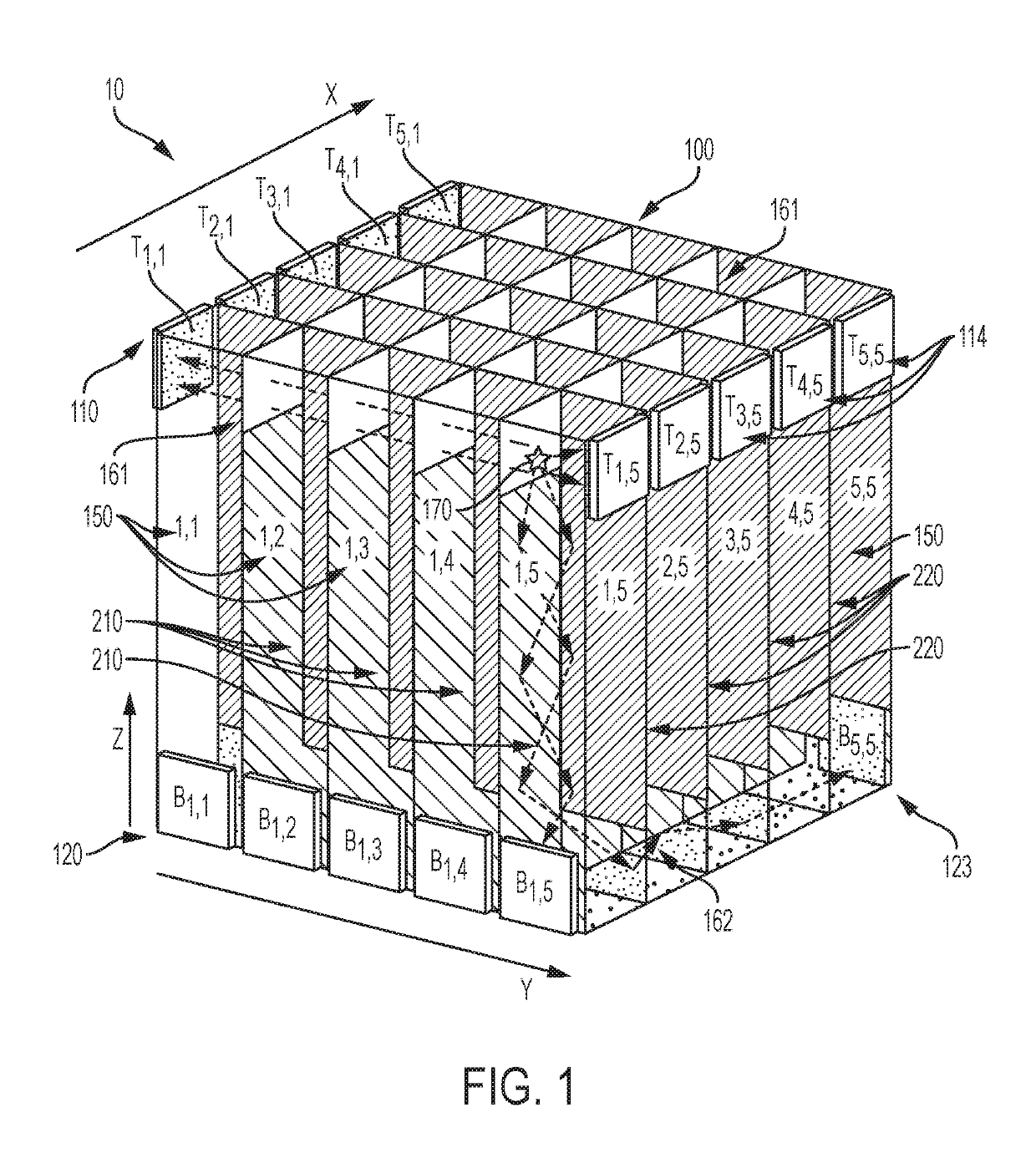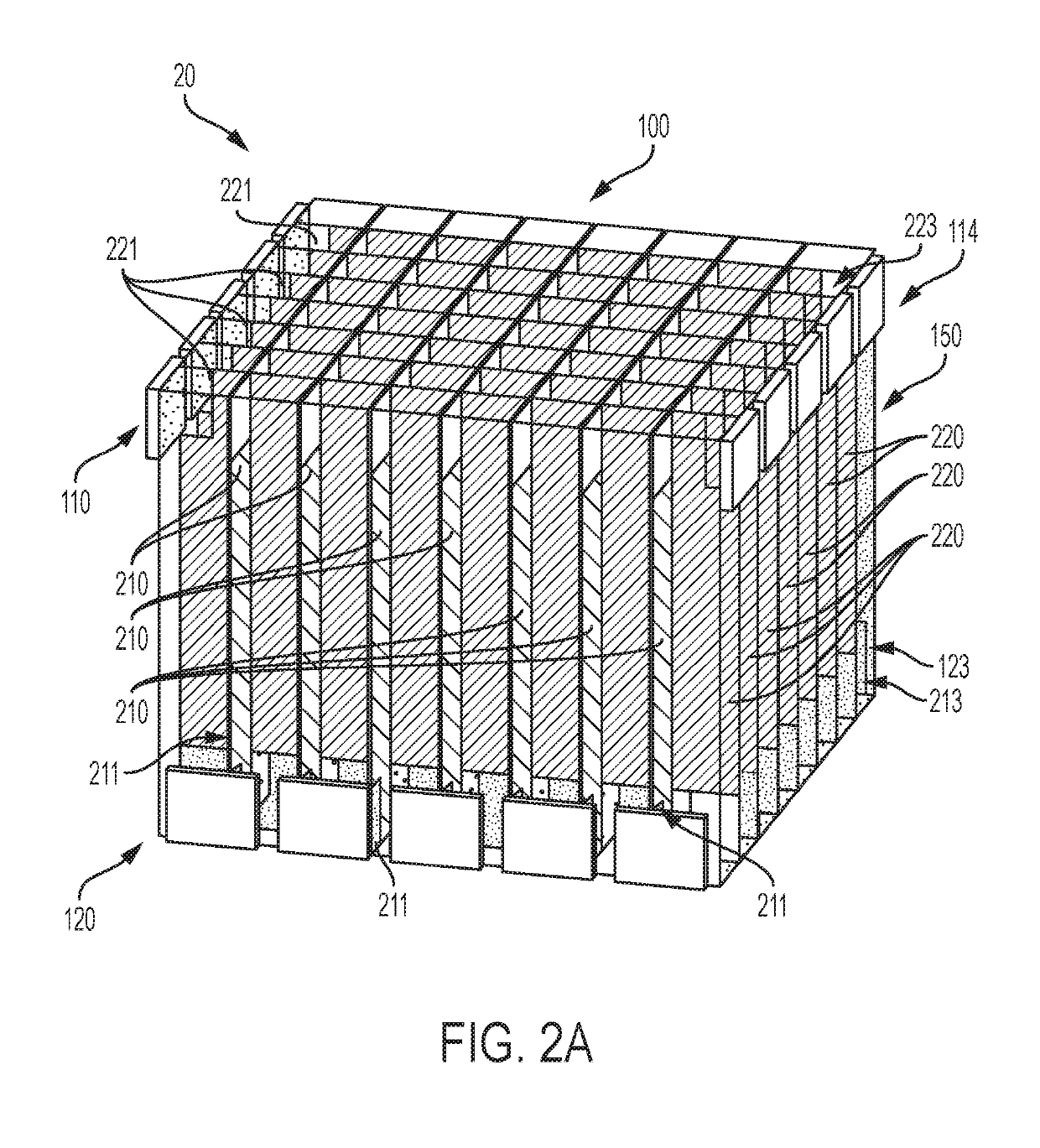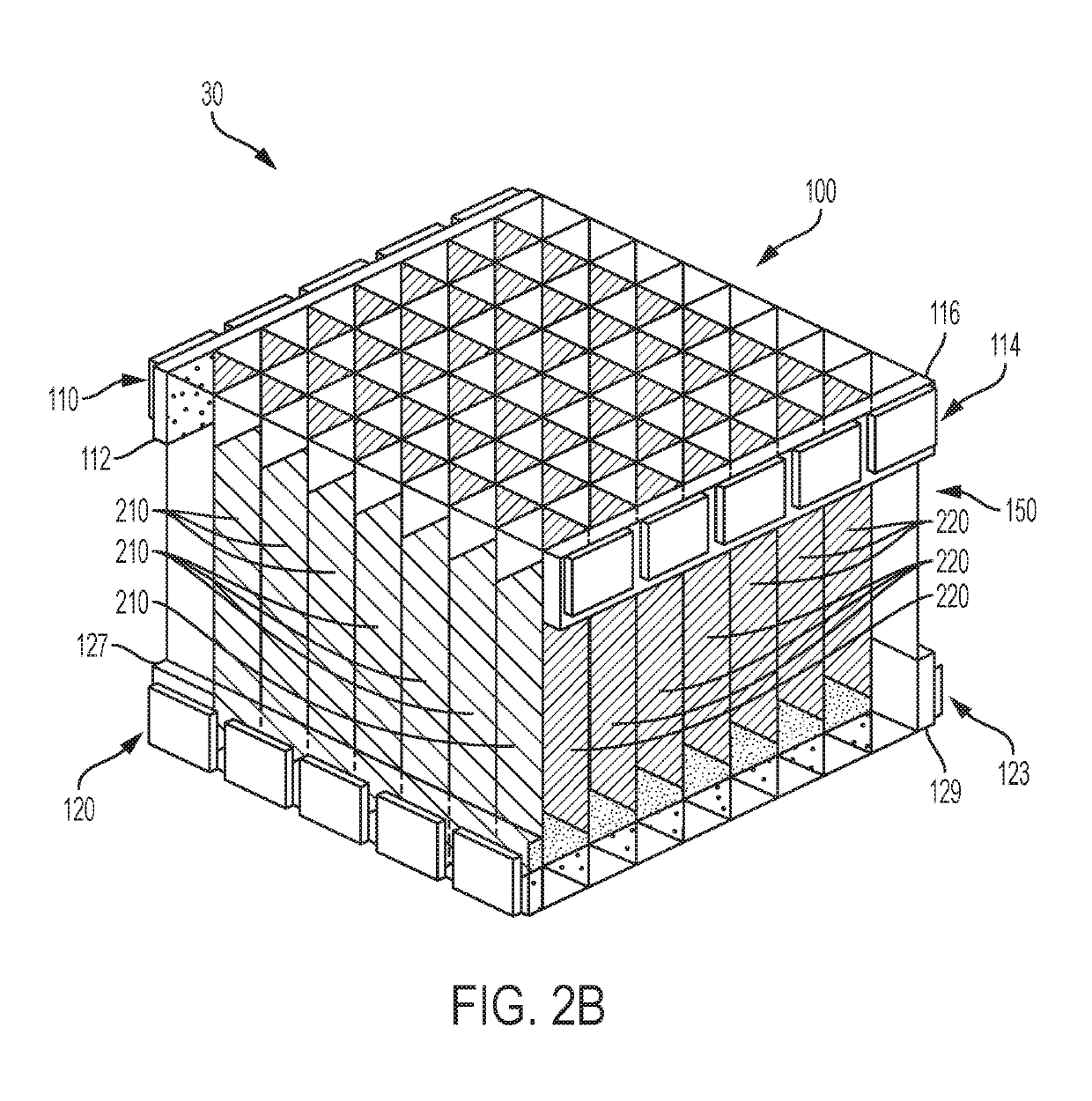Apparatus and methods for depth-of-interaction positron tomography detector using dichotomous sensing
a positron tomography and dichotomous sensing technology, applied in the field of apparatus and methods for depth-of-interaction positron tomography detectors using dichotomous sensing, can solve the problems of poor practical clinical resolution, untapped cancer application potential of pet in whole body, and current high cost of sensors and pmts, so as to improve resolution, reduce heat load during operation, and reduce manufacturing costs
- Summary
- Abstract
- Description
- Claims
- Application Information
AI Technical Summary
Benefits of technology
Problems solved by technology
Method used
Image
Examples
Embodiment Construction
[0042]Referring initially to FIG. 1, an apparatus 10 for optical emission detection comprises a block 100 comprising scintillation crystals 150 configured in an arrangement having X-Y-Z dimensions. It is understood that the use of X-Y-Z nomenclature (and other related terms such as “row” and “column”) is used to refer to orthogonal axes, and is not intended to indicate any specific orientation for a particular dimension or axis. In addition, any reference to directions such as “top”, “bottom”, “left”, “right”, “front” or “back” is used for sake of convenience when referring to the figures disclosed herein, and is not intended to denote a particular location or orientation for all exemplary embodiments. In the embodiment shown in FIG. 1, block 100 comprises a 5×5 array of crystals. The location of an individual crystal is denoted in the figure by the X-Y coordinates. For example crystal 1,1 is located at row 1, column 1, while crystal 5,1 is located at row 5, column 1 and crystal 5,5...
PUM
 Login to View More
Login to View More Abstract
Description
Claims
Application Information
 Login to View More
Login to View More - R&D
- Intellectual Property
- Life Sciences
- Materials
- Tech Scout
- Unparalleled Data Quality
- Higher Quality Content
- 60% Fewer Hallucinations
Browse by: Latest US Patents, China's latest patents, Technical Efficacy Thesaurus, Application Domain, Technology Topic, Popular Technical Reports.
© 2025 PatSnap. All rights reserved.Legal|Privacy policy|Modern Slavery Act Transparency Statement|Sitemap|About US| Contact US: help@patsnap.com



